The Gen Z Era is Bringing Back Retro Tech!
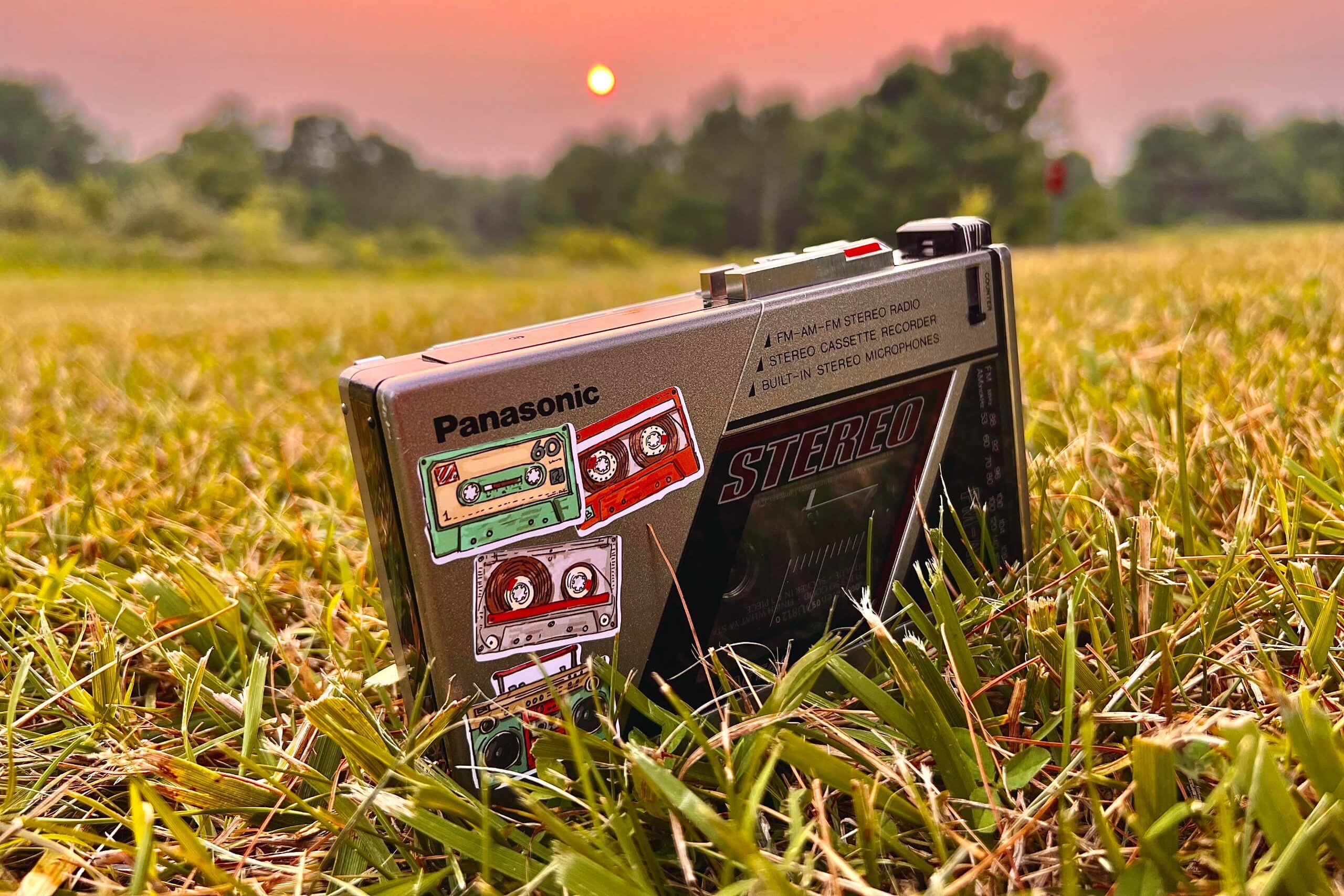
Didn’t we all think the days of the little plastic rectangles and the pencil-rewind trick were long gone? Yet here we are, watching Gen Z fall head over heels for the very technology their parents shelved decades ago. It’s more than just a passing trend; it’s a genuine movement where this digital-native generation is finding something deeply meaningful and authentic in the humble cassette and the iconic Walkman. Grab your favorite tape, settle in, and let’s unravel the incredible reasons why this old-school format is their new cool.
1. A Tangible Rejection of Digital Overload
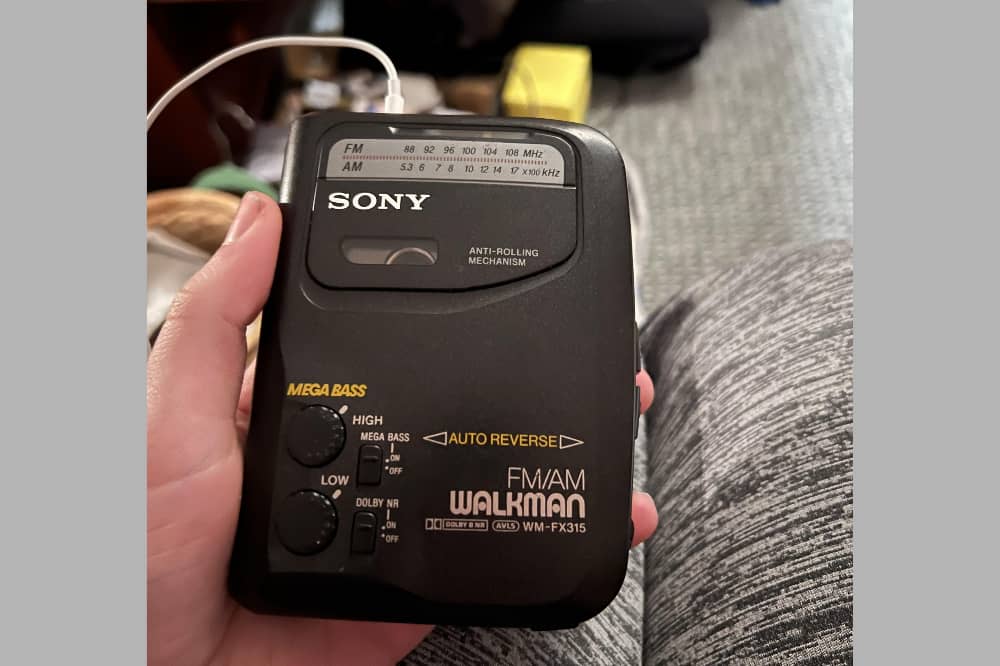
When everything is infinite, instantaneous, and in the cloud, having something you can physically hold, unwrap, and display becomes incredibly appealing. We’re all experiencing a touch of digital fatigue, and for Gen Z, a cassette tape is a simple, tangible object that exists outside the scroll. It’s a deliberate act of choosing a container for their music instead of an endless digital playlist. This physical connection to music, something you have to actively engage with, flipping the side, pushing the ‘play’ button, offers a refreshing resistance to the passive, background consumption that defines the streaming era. It transforms the act of listening from a utility into a ritual, a small, mindful rebellion against the always-on pressure of the internet. Experts in cultural trends suggest this longing for the ‘real’ is a core drive for the generation that grew up entirely online.
2. Sales Prove the Revival is Real
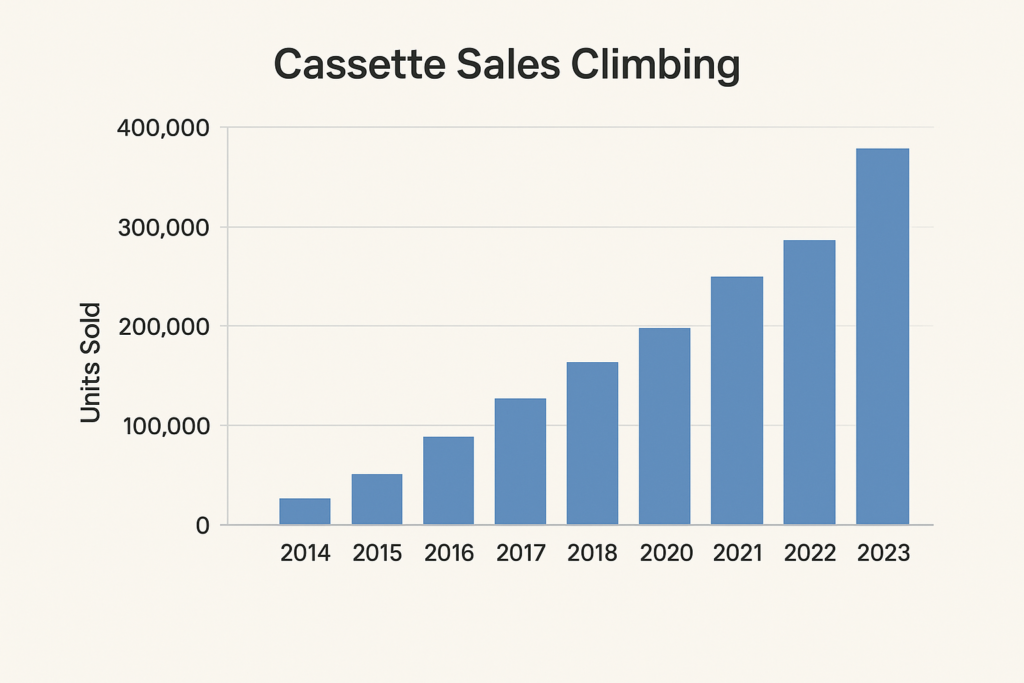
It might seem like a niche hobby, but the numbers don’t lie: cassette sales are climbing steadily, jumping by a remarkable fivefold over the past decade in the U.S., with over 436,000 units sold in 2023. While still a fraction of vinyl or streaming, this growth trajectory clearly signals that the format has found its footing with a new audience. The demand isn’t just from nostalgic older folks, either; a significant portion of these sales are driven by young buyers who see the format not as a relic, but as a fresh, affordable way to own their favorite albums. This unexpected commercial comeback signals that the cassette is shedding its “throwback” label and becoming a genuinely viable and cool physical format, proving it’s more than just a temporary fad driven by irony or a momentary pop-culture push.
3. The Aesthetic is a TikTok Hit
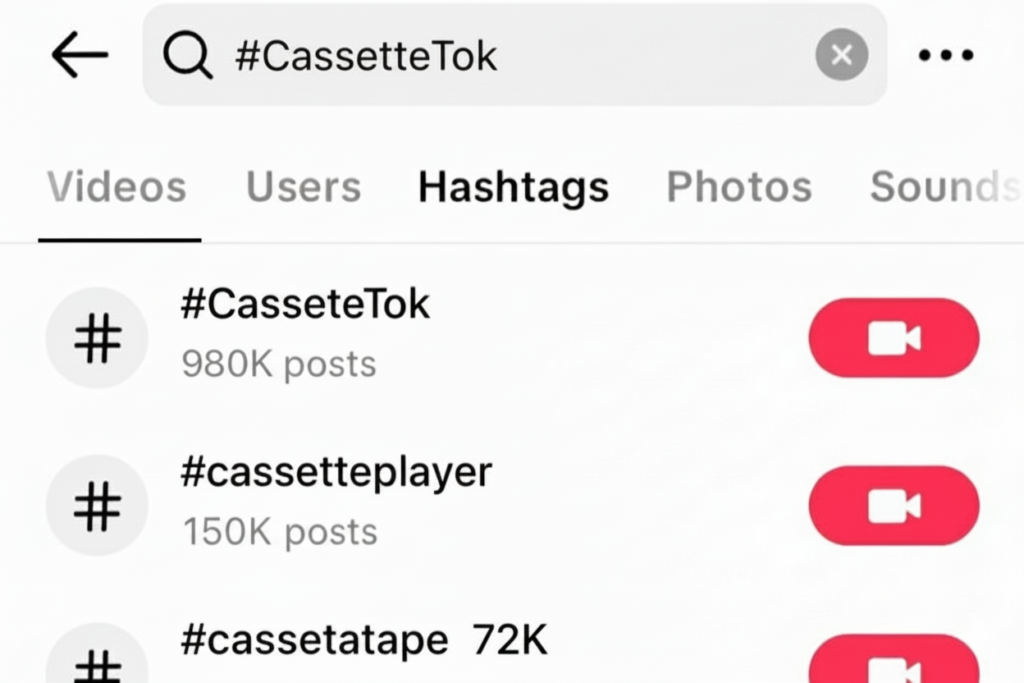
If a trend isn’t on TikTok, is it even a trend? For the cassette revival, the hashtag #cassettetok is a vibrant hub with millions of views, serving as the format’s primary digital launchpad. Gen Z uses the platform to show off the vibe of the analog lifestyle: videos of carefully curated shelves of tapes, aesthetic room decor centered around a vintage Walkman, and the tactile process of unboxing a new album on tape. It’s a key part of the “lo-fi” and “cozy” aesthetic that dominates their social media feeds, positioning the cassette not just as a listening medium, but as a critical fashion and decor accessory. This visual appeal has been instrumental, as music isn’t just about sound anymore; it’s about creating a personal, stylish lifestyle that can be shared and consumed visually by their peers.
4. Pop Culture Gave Them a Cool First Look
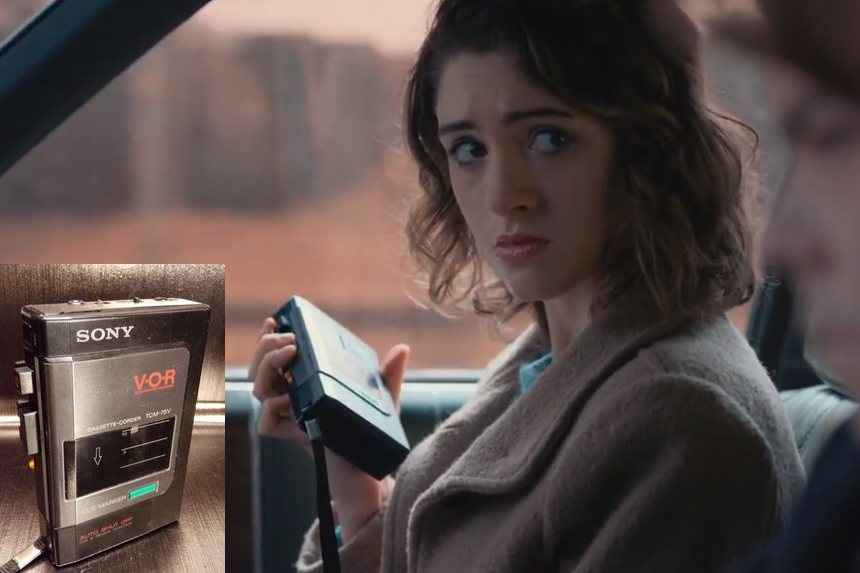
For many Gen Zers, their initial exposure to a cassette wasn’t in their parents’ dusty attic, but on a massive streaming hit like Stranger Things or the Guardians of the Galaxy franchise. These major pop culture touchstones transformed the Walkman from an outdated gadget into an icon of a cool, adventurous past. The music on the tapes in these shows often plays a vital, emotional role, instantly imbuing the format with a sense of high drama and nostalgia they haven’t personally experienced. This narrative context immediately bypasses the era of obsolescence and jumps straight to the format being a symbol of personality, rebellion, and deep emotional connection. The cultural visibility turned an old technology into a desirable prop, opening the door for them to explore its actual utility.
5. The Price Point Beats Out Vinyl’s Cost
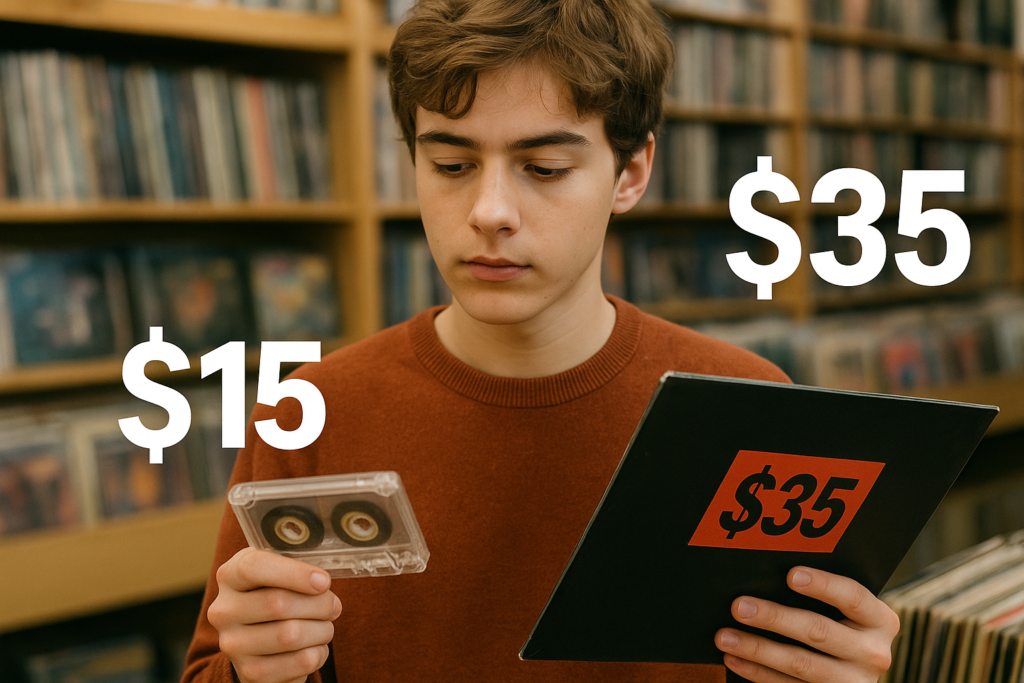
While vinyl has experienced a massive resurgence, its rising cost makes it prohibitive for many young collectors, with new albums often priced in the $30 to $40 range. The cassette, however, presents itself as the financially sensible younger sibling, with new releases typically costing an accessible $13 to $15. This significant price difference is a major driver for the trend, making physical music ownership realistic for students and those with tighter budgets. They get the satisfying experience of owning and collecting a physical item without the hefty financial investment required for an equivalent vinyl collection. This affordability is what allows them to build a diverse library and participate fully in the collecting culture their generation loves, making the cassette a truly democratic format.
6. Major Pop Stars Endorse the Format
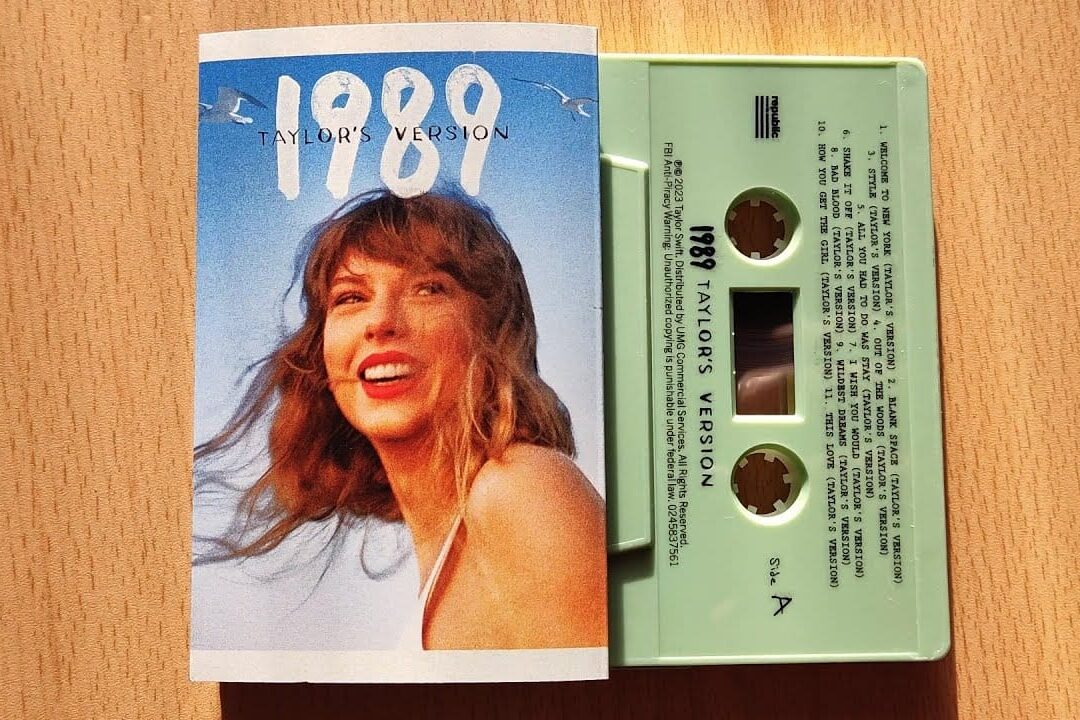
When music industry heavyweights like Taylor Swift, a key cultural force for this generation, release their albums on cassette, it’s not just a promotional gimmick, it’s an endorsement that legitimizes the entire format. Swifties, for instance, often buy the cassette versions as a collectible trophy, a limited-run item to display proudly on their shelves alongside their vinyl and CDs. It signals that this once-forgotten format is now cool enough for the biggest stars in the world, transforming the tape from a retro novelty into a piece of contemporary music memorabilia. This push by major artists gives the cassette massive visibility and validates it as a format that matters right now, instantly erasing any perception of it being just an outdated niche item.
7. It’s a Perfect Fit for Collecting Culture
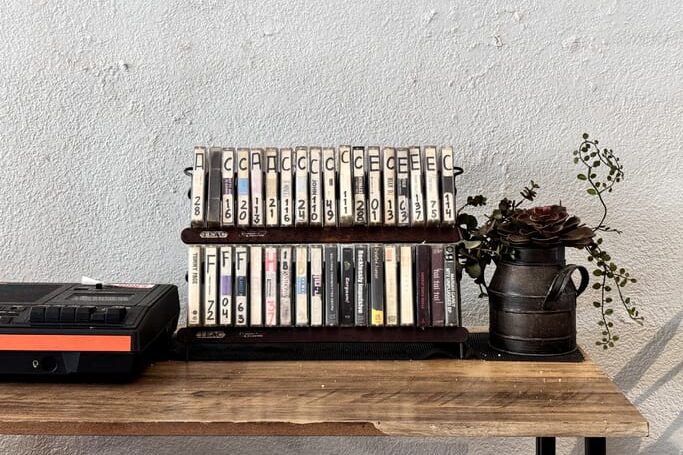
From sneakers to Pokémon cards to Funko Pops, Gen Z has a deep-seated love for collecting limited and rare items, and the cassette fits perfectly into this mindset. Labels and artists often release tapes in limited-edition color variants, think pink, green, or glow-in-the-dark plastic shells, which instantly fuels the collector’s desire and creates a fear of missing out (FOMO). Since cassette runs are usually smaller than vinyl, the rarity is built-in, making the hunt for a specific tape a rewarding challenge. This scarcity and variety transform the act of buying music into a hobby akin to collecting miniature art pieces, appealing directly to the generation’s established patterns of consumption and display.
8. The Mixtape is Reborn as Analog Romance
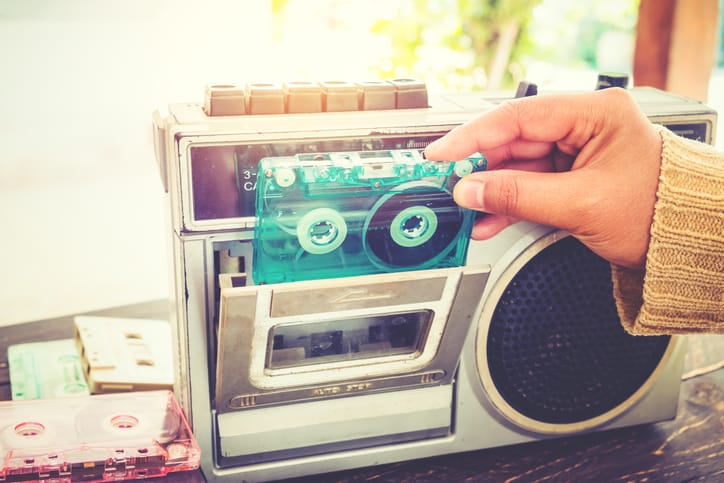
In a world where sharing a playlist is as simple as two taps on a screen, the effort, time, and thoughtfulness required to create a physical mixtape for someone carries a profound and romantic weight. For Gen Z, this manual process, choosing the songs, recording them in sequence, designing the J-card, and timing the fades, has become a powerful, intentional love language. It’s a stark contrast to the fleeting, easy nature of digital sharing, offering a tangible token of affection that feels deeply personal and permanent. This revival of the mixtape ritual satisfies a need for more meaningful connections and gestures in a hyper-digital social landscape, adding a nostalgic yet deeply felt layer of authenticity to their relationships.
9. The Walkman is a Deliberate Fashion Statement
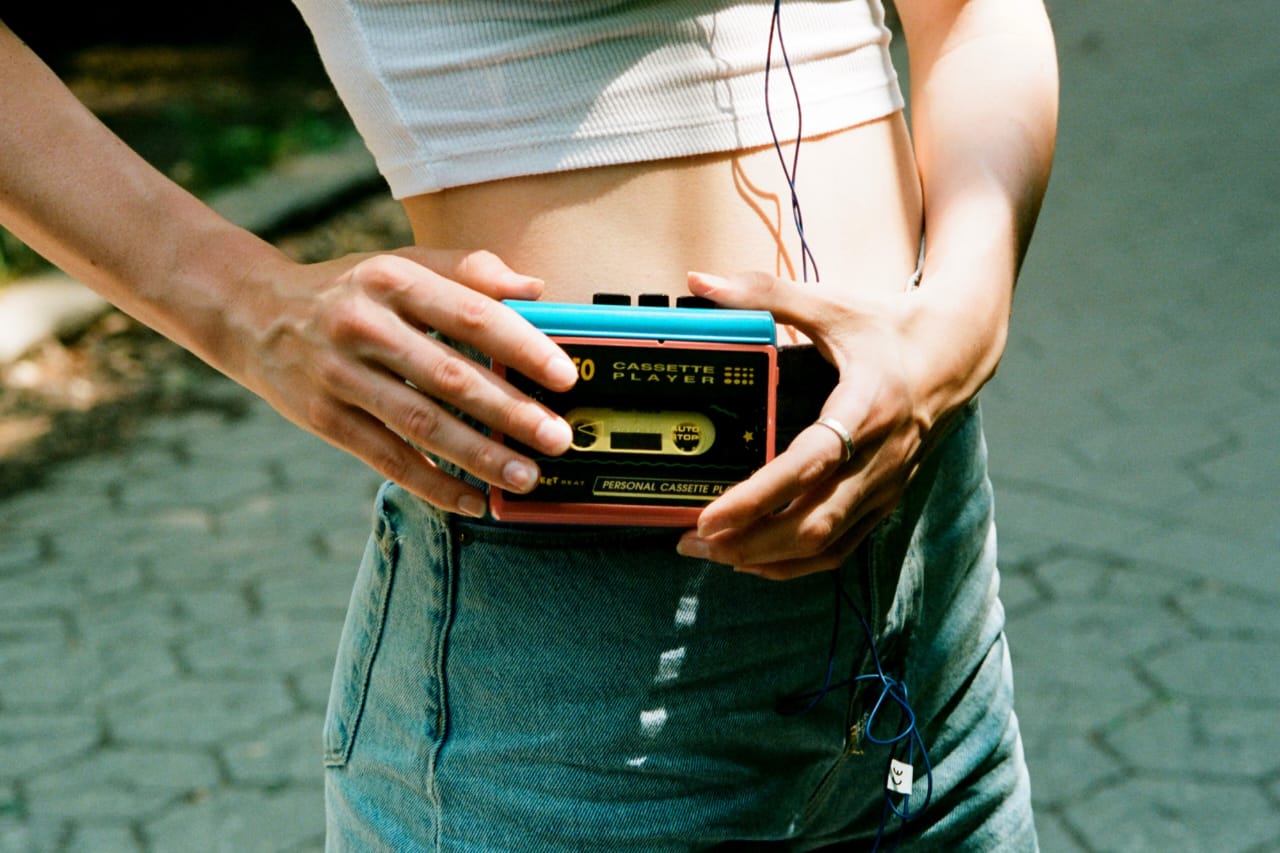
The vintage Walkman has transcended its function as a music player to become a prominent fashion accessory, often appearing clipped to belts or incorporated into “outfit-of-the-day” posts on social media. Unlike the near-invisible nature of AirPods, the bulk and classic design of the Walkman make a clear, visible statement: “I listen to music in a deliberate, old-school way.” It signals a specific, curated retro identity, lo-fi, artsy, and self-aware, that appeals to the generation’s desire to stand out from the crowd. Owning a Walkman is a stylish badge of opting out of the mainstream, showing a commitment to a tangible, less disposable relationship with technology and music.
10. The Ritual Forces a Welcome Slowness
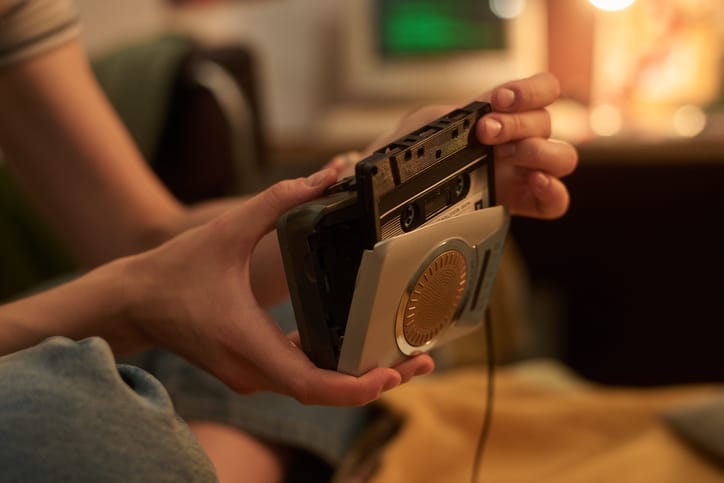
In a culture defined by the infinite scroll and the instant skip, the cassette tape forces a beautiful, meditative slowness. You can’t instantly jump to the next song without hitting fast-forward (or rewind!), you have to physically flip the tape over to hear the second half, and a simple tape player doesn’t easily allow for multitasking. This forced patience has become a therapeutic, almost mindful practice for Gen Z, who are often overwhelmed by the breakneck pace of modern life. The simple act of slowing down, engaging fully with a physical piece of media, and listening to an album exactly as the artist intended provides a much-needed break and a sense of calm against the constant pressure of digital immediacy.
11. New Players Offer Modern Convenience
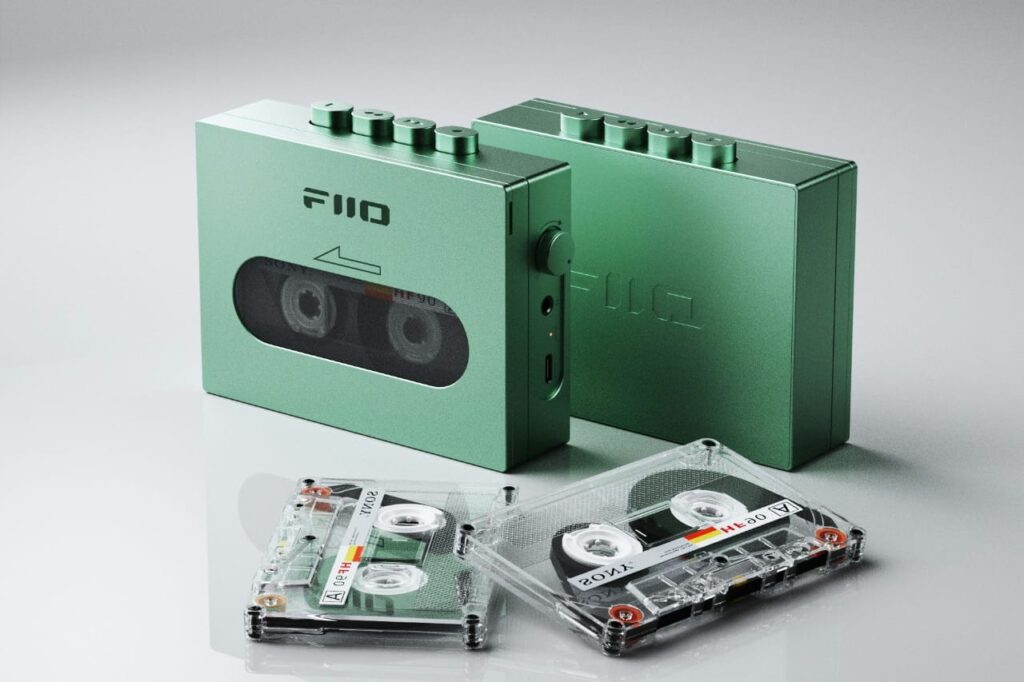
The cassette revival isn’t strictly limited to fragile, decades-old vintage gear. Companies are recognizing the trend and releasing modern cassette players, like the FiiO CP13, which combine retro aesthetics with contemporary convenience. These new machines often feature basics like USB-C charging, improved internal components, and better durability than their original counterparts. This blending of old-school charm with 2025 reliability removes a major barrier to entry: the fear of hunting for a working, temperamental vintage unit. It allows the new generation of listeners to fully embrace the format’s sound and ritual without having to become amateur electronics repair technicians.
12. Cassette Store Day Builds Community Excitement
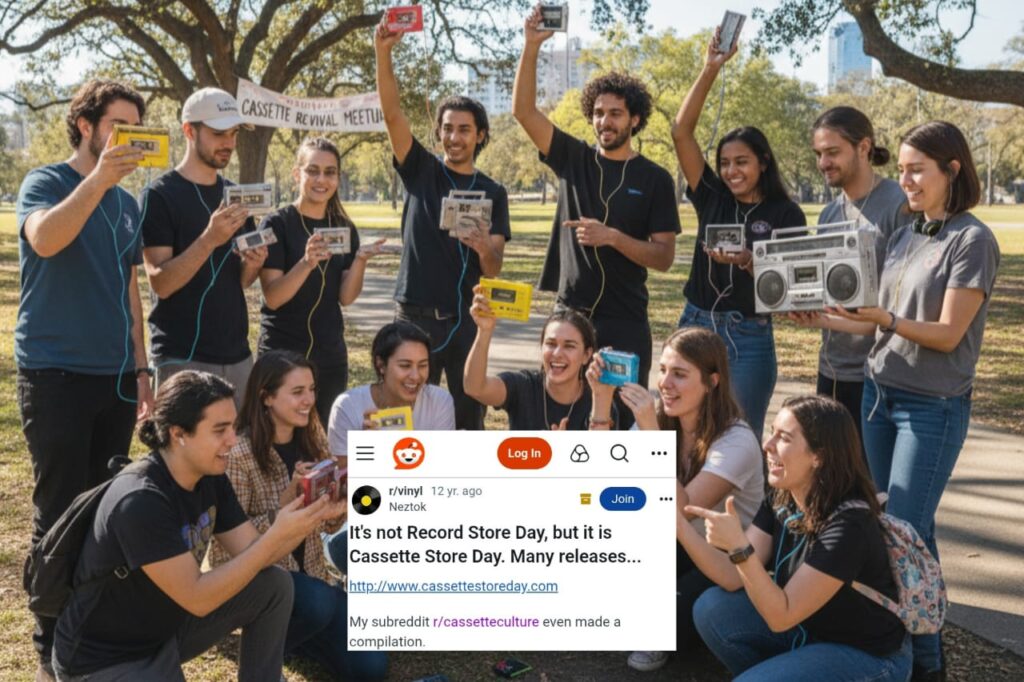
Modeled after the highly successful Record Store Day, Cassette Store Day has emerged as an annual focal point that fuels excitement and drives community engagement around the format. On this day, artists release exclusive, limited-edition tapes, prompting fans to line up at independent music shops to snag a rare collectible. For Gen Z, this event feels similar to the culture surrounding a sneaker drop or a new video game launch, it’s a time-sensitive event with highly coveted items that must be secured in person. This structured, celebratory moment transforms the casual buying of a tape into a shared, collective experience, complete with the excitement of the hunt and the pride of ownership.
13. The Imperfect Lo-Fi Sound is Loved
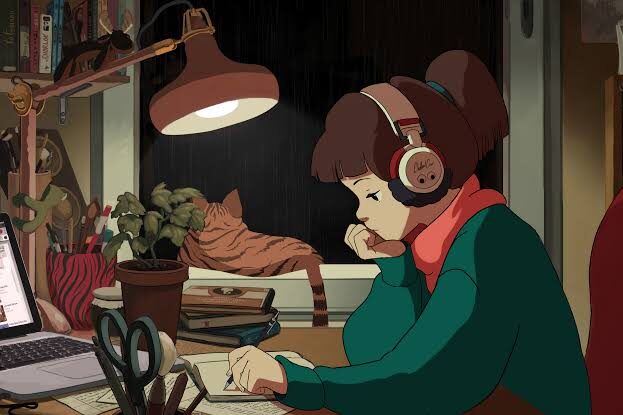
Unlike the pristine, highly compressed audio of most streaming services, cassettes have an inherent warmth, hiss, and slight wobble that makes the music sound, well, imperfect. But this imperfection is precisely what Gen Z loves. It’s the analog texture that gives the music character, making it sound more personal, intimate, and less sterile. Genres like lo-fi hip-hop and bedroom pop, which are incredibly popular with this demographic, feel perfectly suited to the format’s slightly fuzzy, nostalgic sound profile. Music experts suggest that this preference for lo-fi audio is a rejection of the “clinical perfection” of digital, where the imperfections add an authentic, human element that resonates deeply.
14. Billie Eilish and Other Stars Use Them for Collectibles
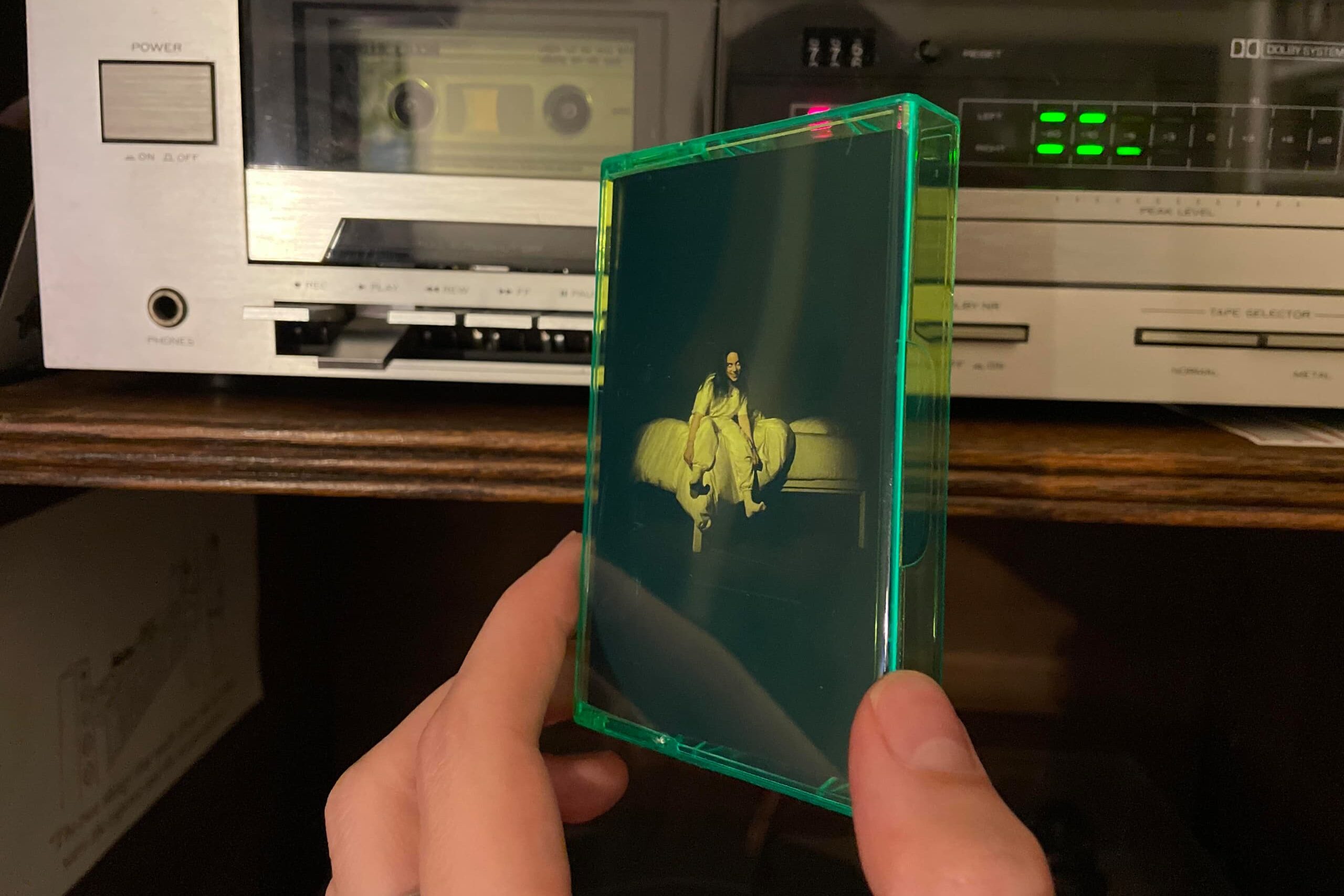
Beyond Taylor Swift, a host of other massive contemporary artists, including Billie Eilish, Harry Styles, and Olivia Rodrigo, consistently release their albums on the cassette format. This trend shows that the format has been fully absorbed into the modern music marketing machine, not primarily for playback, but for its value as a collectible item. Fans are often motivated to buy these limited-run tapes to complete their physical media collection of a favorite artist, even if they don’t own a player. Owning a rare, color-variant cassette becomes a high-status badge of fandom, proving their dedication and love for the artist in a way that goes beyond merely streaming their music.
15. The Resale Market Turns Tapes into an Investment
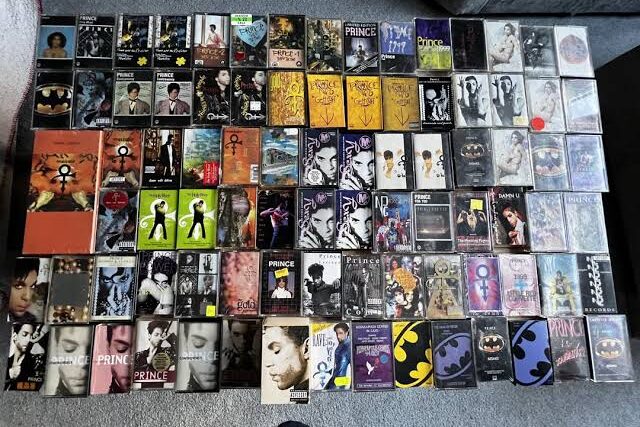
Gen Z is digitally native and savvy about the resale economy, and they quickly noticed that rare and sealed cassettes, both vintage originals and new limited-edition runs, can command surprisingly high prices. An original Prince or Madonna album from the 80s can resell for hundreds, while a sold-out, color-variant tape from a modern pop star can flip almost instantly for a significant profit. This knowledge adds a layer of economic incentive to the collecting habit. Tapes aren’t just for listening; they are seen as small, tangible investments that can hold or increase their value, blending the joy of collecting with a pragmatic financial sensibility.
16. It’s the Ultimate Antidote to Digital Overload
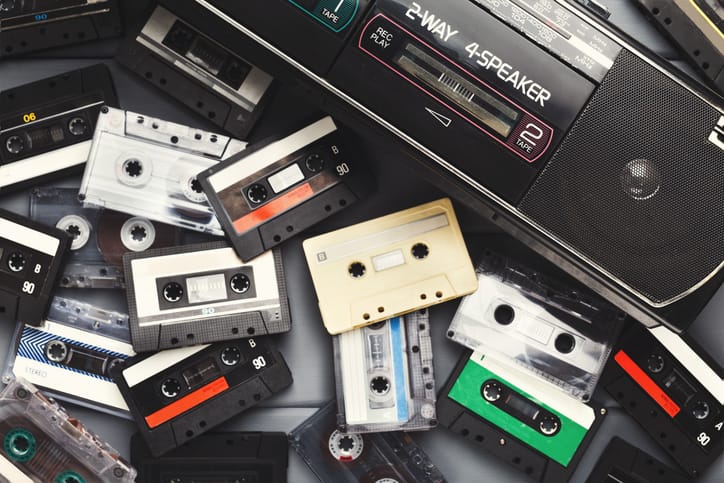
At its core, the cassette revival is a deep, instinctual reaction to the sensory and cognitive overload of the digital age. In a world of infinite options and endless notifications, the cassette forces simplicity: one album, two sides, one focus. You can’t skip, you can’t be instantly interrupted by a pop-up ad, and you can’t endlessly scroll. This enforced limitation has become a profound form of digital minimalism for Gen Z, offering a dedicated space for pure, uninterrupted listening. They are not just buying a piece of plastic; they are buying an escape hatch into a moment of focus, proving that in their quest for authenticity and calm, the best way to move forward is sometimes by choosing to rewind.
Bonus Guide: Best Cassette Players & Tapes to Buy Now
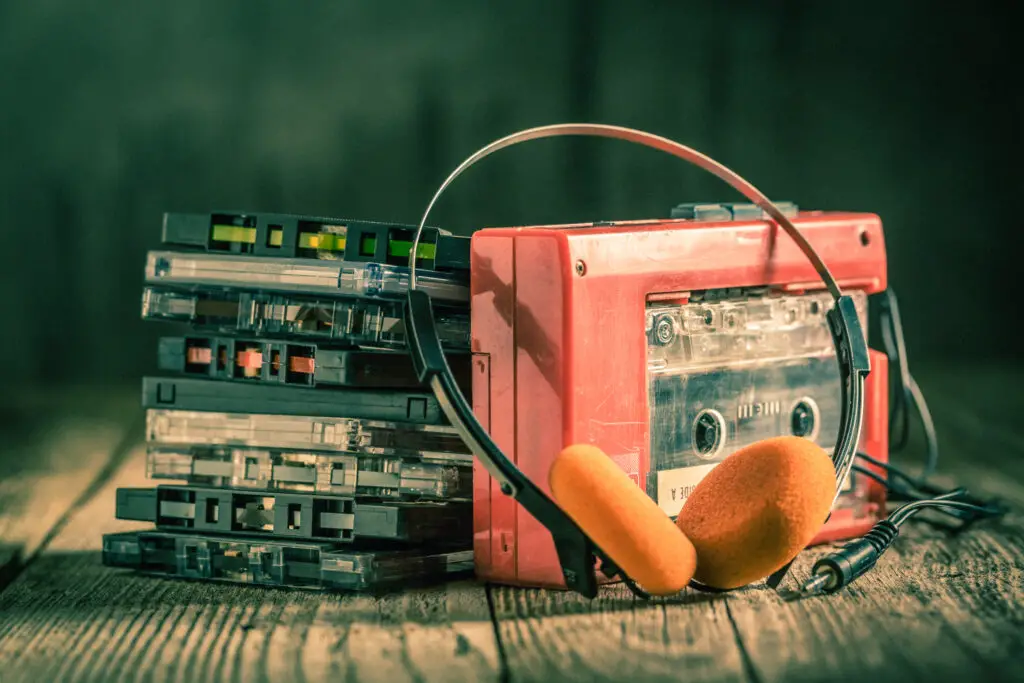
Looking for where to buy or what to listen to? We got you covered with our bonus list!
1. The Affordable, Durable Starter Walkman
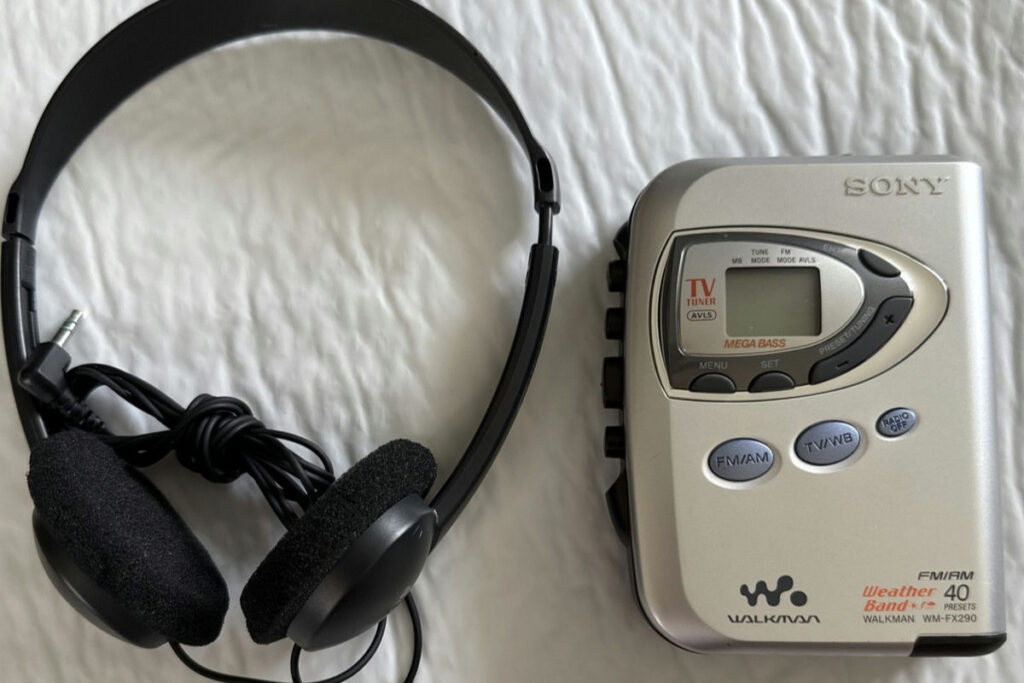
If you’re looking to dive into the cassette world without risking a ton of money on a fragile relic, the Sony Walkman WM-FX290W is often recommended as the perfect, late-era starter deck. Produced in the 1990s, these models are generally sturdier and more reliable than the very early versions, and they often include features like built-in radio tuners. You can usually find a refurbished model online, on sites like eBay or through specialty repair shops, for an accessible price point, typically ranging from $50 to $120. It’s the ideal entry point: reliable, classic Walkman style, and tough enough to handle being clipped onto a backpack, making it a functional and fun introduction to the analog life.
2. The Iconic, High-End Collectible Walkman
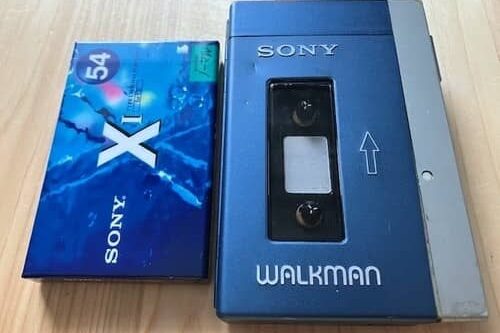
The Sony TPS-L2 is the legendary machine that launched the portable music revolution back in 1979 and gained recent fame as the iconic player carried by Star-Lord in Guardians of the Galaxy. This is the one you buy if you’re serious about the history or want a stunning display piece, but be warned: they are rare, often require maintenance, and command a collector’s price, frequently exceeding $1,000 for a fully working, pristine unit. However, owning this specific machine is like owning the very first generation iPhone, it’s a crucial piece of audio history. For the Gen Z collector, this is the Holy Grail, representing the ultimate commitment to retro tech identity and a visual link to their favorite pop culture moments.
3. Aiwa’s Stylish, Quality Second-Hand Gems
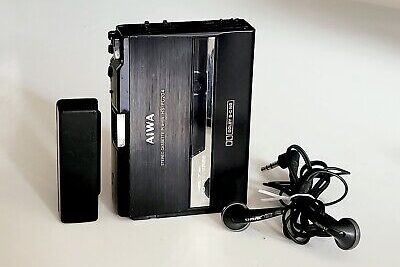
Before Sony dominated, Aiwa was a fierce competitor, and their HS series from the 1980s and 90s are revered by collectors for their strong build quality, compact size, and excellent sound output. These players often feature sleek, futuristic designs for their era, and they offer a great balance between vintage cool and reliable performance. Secondhand units typically sell for a more manageable range of $70 to $200, making them a fantastic alternative for those who want a premium vintage feel without shelling out for the highly publicized, most expensive Sony models. Many aficionados believe the audio quality from some Aiwa units rivals or even surpasses contemporary Walkmans, cementing their status as a savvy collector’s choice.
4. Modern Reliability with Refurbished Players
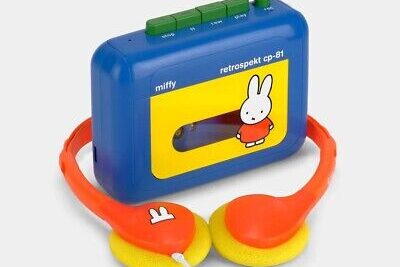
For the Gen Z buyer who loves the vintage look but needs modern peace of mind, companies like Retrospekt offer the perfect solution. Based in Milwaukee, they take vintage Sony and Aiwa shells, completely overhaul them, replacing old, fragile components with modern, reliable parts. This means you get a classic Walkman aesthetic with a newly tuned audio path and a warranty, removing the anxiety of relying on decades-old motors and belts. These professionally refurbished players typically range from $150 to $300, offering a premium experience that merges retro charm with 2025-level functionality, making them arguably the most sensible choice for a daily-use player.
5. The Best Player That’s Brand New
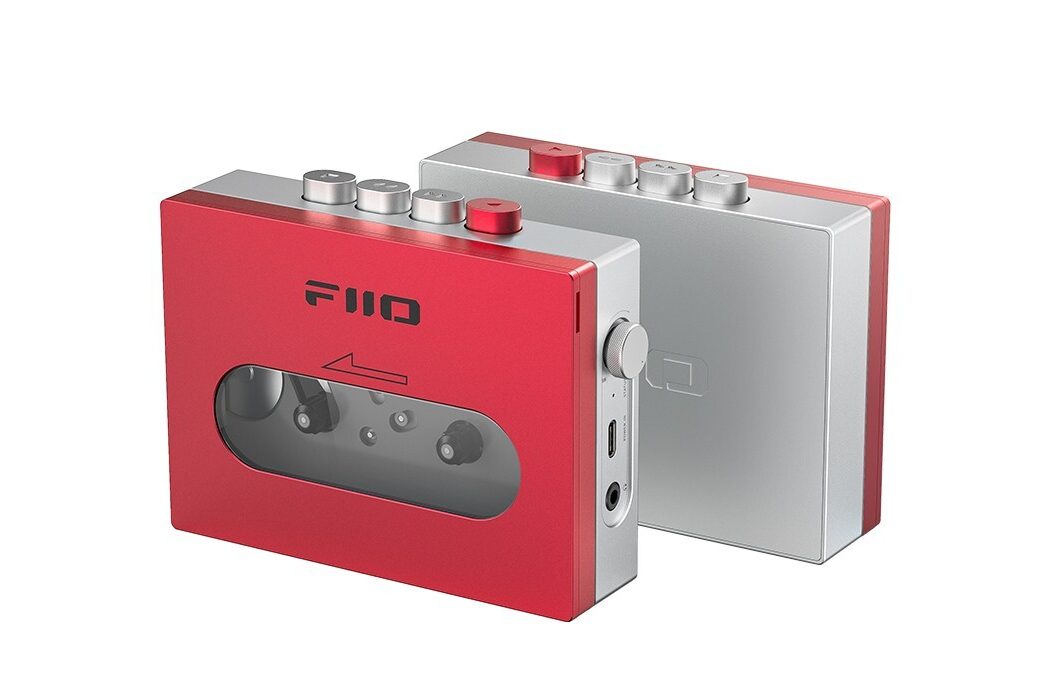
If the vintage hunt and refurbished costs are too much, the FiiO CP13 represents the next generation of analog playback. This is a newly manufactured cassette player built from the ground up to modern standards, featuring conveniences like USB-C charging and robust, durable internals. It is designed to look like a premium, 80s-era portable, but with the benefit of modern engineering, ensuring the longevity and ease of use that a digital native expects. Priced around $130, it’s a brilliant option for those who simply want a dedicated, reliable machine to play all those Taylor Swift and indie tapes without the risks associated with buying equipment that’s forty years old.
6. The Essential Taylor Swift Collectibles
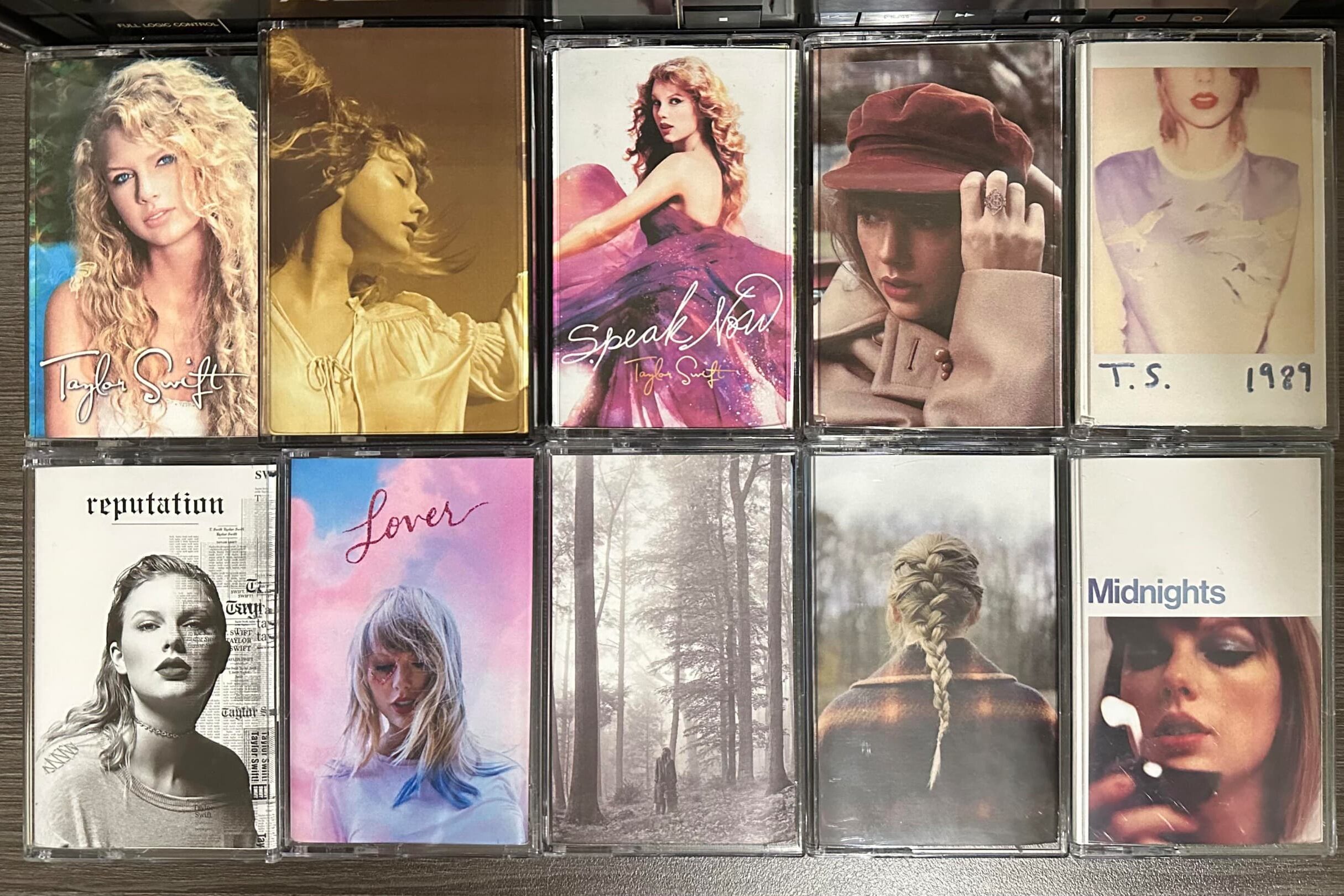
No discussion of the current cassette market is complete without mentioning Taylor Swift. Her cassette releases are not just music; they are limited-edition collectibles, often released in unique colors corresponding to the album’s aesthetic. These tapes retail for an accessible $13 to $20, but due to their limited supply and high fan demand, they often sell out instantly and flip for significantly higher prices on the resale market. For Gen Z Swifties, acquiring these tapes is a rite of passage and a vital piece of their fandom identity. They serve as tangible proof that the format is relevant, driven by the most powerful forces in contemporary music.
7. Supporting the Scene with Indie Band Tapes
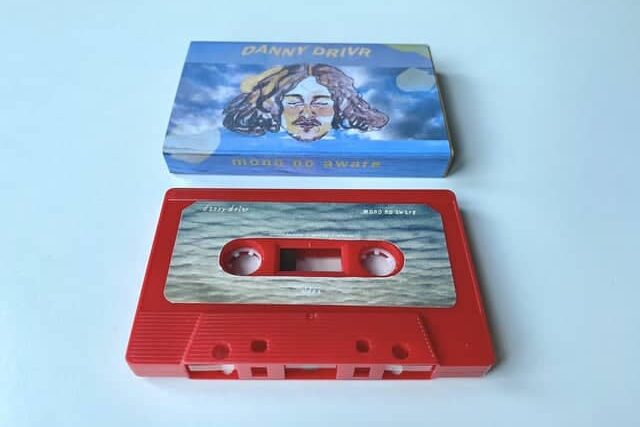
The real soul of the modern cassette movement is found on platforms like Bandcamp or at local venue merch tables. This is where small, independent, and punk artists sell their work on tape, often priced between $10 and $15. These releases are frequently small-batch, sometimes featuring handmade packaging, unique artwork, and personalized inserts, giving them a raw, DIY artistry. Buying these tapes is the most direct way to support underground music, and the low price point allows Gen Z fans to build a truly eclectic and unique collection that reflects their commitment to local scenes and alternative culture.
8. The Thrill of the Ultimate Thrift Store Bargain
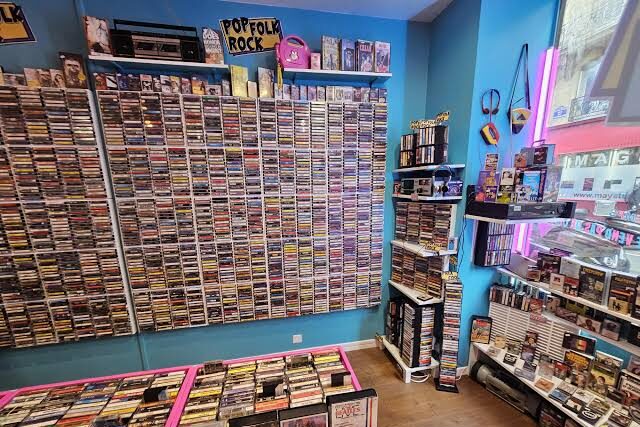
The cheapest, most exciting entry point remains the thrift store. For as little as $1 or $2, you can walk away with an entire library of unexpected surprises. From classic 80s pop to forgotten jazz records and strange spoken-word tapes, the variety is limitless. This method perfectly captures the Gen Z love for thrifting and sustainable consumption, offering a guilt-free way to build a collection while embracing the aesthetic of finding hidden gems. It’s an easy, low-commitment way to start the treasure hunt and fall in love with the format’s spontaneous, analog charm.
This whole revival, driven by affordability, aesthetics, and a deep-seated desire for slowness in a fast world, makes the cassette more than just music; it’s a lifestyle choice. Whether you opt for a sleek, refurbished machine or snag a handful of surprise tapes from a thrift bin, you’re joining a movement that values tangible connection and mindful listening, and that’s a beautiful sound to hear.
This story 16 Reasons Gen Z Is Rewinding with Cassettes & Walkmans was first published on Daily FETCH


